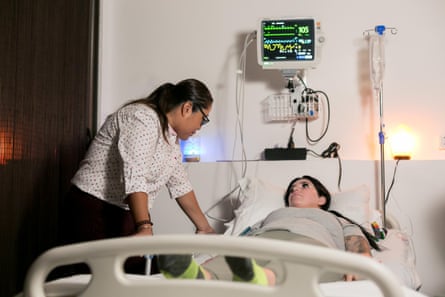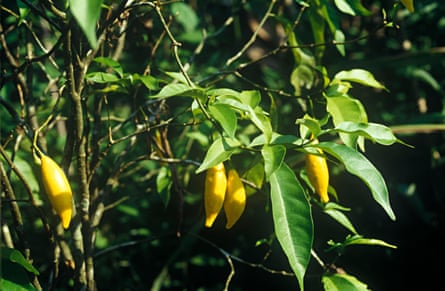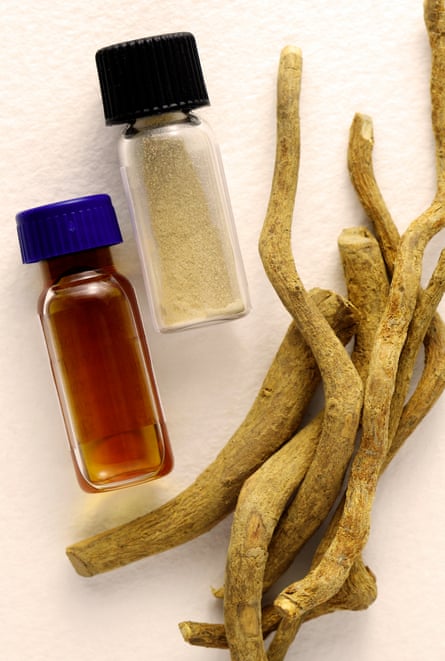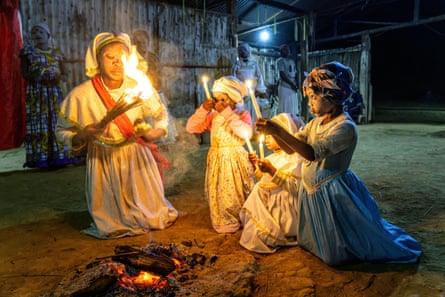Lynn Smith was lying in a bed on the third floor of a beachfront house, unable to move her body from the neck down. A buzzing grew louder in her eardrums; just when she thought she couldn’t take it any more, it stopped. Then the visuals started.
For 22 hours after a nurse administered three pills of a psychedelic called ibogaine, Smith relived the series of events that had led her to this treatment clinic just south of Tijuana, including being ejected from a truck years prior. The accident left her with a crushed skull and prescriptions for the opioids she was addicted to for almost 20 years.
“It was horrific, it was the worst thing in the world, what I saw,” said Smith (whose name has been changed to protect her identity) referring to her experience on ibogaine. Behind closed eyelids, she also witnessed wires in her brain being ripped apart, singed, and pieced back together like a puzzle. Under the watch of a nurse who kept an eye on her vitals, Smith’s body shot straight upright in bed then flopped back down before darting up again – all part of an ibogaine trip.

She spent five weeks at the clinic, where, not unlike upscale in-patient substance use disorder treatment centers in the United States, she was offered psychotherapy sessions, acupuncture, and lounge chairs overlooking the beach. But the main attraction was the powerful psychedelic, an experience Smith, now an in-home caretaker in Arizona, believes saved her life. “It’s like I was put back to the day before I ever used a drug,” she said.
A Schedule I substance (the same category as heroin, cannabis and peyote) in the US, ibogaine is a controlled substance with no recognized medical benefits and a high risk of abuse. It is illegal in the US, but in countries such as Costa Rica, Mexico, New Zealand and the Netherlands, it is unregulated, which has allowed clinics to flourish. Starting in the early 2000s, the opioid crisis – in April 2021, annual overdose deaths in the US reached 100,000 for the first time; the Centers for Disease Control and Prevention estimates that nearly 76,000 of these deaths were from opioids – gave way to a booming industry of makeshift ibogaine treatment clinics like the one where Smith was treated, often set up in rented houses located right across the US border.
A simple internet search for ibogaine therapy in Mexico will reveal plenty of options – mostly unregulated, with some existing only on social media. A few are fully accredited medical facilities, others do not include any medical personnel at all and most sit somewhere in between – a local doctor may have a relationship with a provider and clear patients for an ibogaine dose, but may not be present during the treatment. Some are run solely by people who have used ibogaine to get clean and want to help others do the same. They are generally more affordable than traditional rehab clinics in the US (Smith paid $12,000) and offer opioid users another option when rehabilitation and 12-step programs have failed.

Over the past decade, ibogaine’s popularity has incentivized poachers to target shrubs in Gabon, one of the few places Tabernanthe iboga, the plant ibogaine is most commonly derived from, naturally propagates. Consumed in small doses, iboga root bark acts as a stimulant, often brewed into palm wine or chewed to curb hunger and fatigue. In larger doses, iboga has powerful psychoactive effects, which have been harnessed for centuries by the Fang, Mitsogo and Punu people of the Congo Basin, as part of the Bwiti religion. The ongoing poaching is depleting natural reserves of iboga in Gabon’s forests and cutting Gabonese people out of an industry that would not exist without their Indigenous knowledge.
The popularity of ibogaine treatment has also caught the interest of researchers and drug developers, posing ethical questions regarding who has a right to profit off of Indigenous knowledge. Psychedelic therapies are expected to grow into a nearly $11bn industry in the next five years. If developed, synthetic drugs derived from the compounds in ibogaine could offer hope for addiction treatment and decrease demand for poached plants. But as researchers continue to untangle the pharmacological potential of ibogaine, and drug companies take an interest, the people of Gabon are grappling with how they will fit into the equation.
Meanwhile, in Mexico, supply is striving to match demand. Tom Feegel is CEO of Beond, an ibogaine therapy provider in Cancun that opened in February of 2022 and is a fully certified Class 1 medical facility credentialed by the federal government of Mexico. It offers holistic treatment to a maximum of 30 people at a time. There is no database that tracks the exact number of people providing ibogaine therapy, but Feegel estimates as many as 150 ibogaine providers are operating worldwide. He estimates only about 10 are correctly certified as accredited medical clinics.

“The types of people who have tried every other method of rehabilitation and have had them not work are really desperate and are sometimes willing to compromise their safety and values to get help,” he said. “That’s what allows this wild west methodology to exist.”
Feegel refers to some of the ibogaine clinics as “drive-thru detoxes”. “They use ibogaine to offset or temporarily eliminate the symptoms of withdrawal, largely from opioids, and they are not in the business of healing. It is a psychedelic version of what we call the treatment model, where people have to come back,” he said.
Without proper care people have died, usually from cardiac arrest. This is the worst-case scenario, but Feegel said not giving people important auxiliary care, such as psychotherapy during their stay and continuing support once they return home, is another big failure of many providers.
He vows to raise funds to open a chain ibogaine therapy clinics in Mexico with more comprehensive medical and emotional support during treatment, as well as after care. He also plans to open a second clinic in Cancun next month, with hopes of scaling up to treating 300 people a day.
Curb the risk, make a profit
Using ibogaine as a treatment for substance use disorder has become a primary focus of research, but its legal status and potential health risks have made it difficult for researchers to study its effect on humans.
Ibogaine can strain the kidneys and liver, but deaths are almost always attributed to its effect on the heart. Observational studies have concluded that since ibogaine is a stimulant, it can speed heart rate enough to cause cardiac arrest. That risk is amplified by ibogaine clinics operating largely without regulation and the standards of medical care – such as monitoring heart rate and testing patients for drugs that might interact dangerously with ibogaine – that protect the safety of patients who take it.
Scientists in various parts of the world are working to develop synthetic compounds based on ibogaine that can be turned into pharmaceuticals that provide the same benefits without the risks. David E Olson is co-founder and chief innovation officer of Delix Therapeutics. Its goal is to preserve the anti-addiction effects of natural ibogaine while making it safer and eliminating its psychoactive effect.
“We have a hypothesis that the ultimate change that is most important for the therapeutic effects of the compound are changes in structural neuroplasticity in a part of the brain called the prefrontal cortex,” he said. “A single compound that can work across substance use disorders and can potentially produce very long-lasting effects after a single administration, and that you’re not taking daily … it’s something that is changing the wiring of the brain.”

Delix has completed pre-clinical trials and hopes to start human clinical trials in the second half of 2023. In the past year, the FDA has paused clinical trials for other synthetic compounds, including one called 18-MC, over safety concerns.
Olson said that companies should not solely profit off of indigenous plants but argued that synthetic molecules that are unique, though based on ibogaine’s structure, were a different beast. Despite the remaining ethical and scientific questions, he said one thing was clear: ibogaine and the synthetic molecules based on it present a novel opportunity for addiction medicine.
Kurt Rasmussen, chief scientific officer of Delix, said synthetic compounds based on the structure of ibogaine will push addiction treatment further in countries including the US, where ibogaine cannot legally be studied. Synthetic versions also eliminate the need to use root bark in research, which could exacerbate the incentive for poaching. Another way to protect Gabon’s stock of the plant is using an alternative plant altogether. Genís Oña, researcher coordinator at the International Center for Ethnobotanical Education, Research and Service (Iceers) in Spain, is part of a group conducting the world’s first double-blind phase II clinical trial on ibogaine for methadone tapering. They are also exploring an alternative to Tabernanthe iboga.
Other plants contain ibogaine, including one called Voacanga africana. Extracting it takes an extra step, but once that’s done, the final compound is virtually identical to ibogaine from Tabernanthe iboga. The ibogaine used in the novel ICEERS clinical trial is from Voacanga africana.
Psychedelic-focused therapeutic tourism exists around the world and includes plants other than iboga, most notably ayahuasca. But not all psychedelics have the same effect on addiction. Oña said ibogaine was unique in its ability to curb withdrawal when a person is detoxing from pharmacological treatments, such as methadone, for opioid addiction.“There is an instantaneous relief of withdrawal symptoms, which does not happen with ayahuasca, “ said Oña.
With ayahuasca and psychedelics other than ibogaine, the focus is on psychotherapy. The trips can give people insight into the issues that underlie their addictive behaviors and help them use that insight to get sober. Ibogaine is unique. While it does prompt psychological insights similar to those produced by other psychedelics, it is the only one that also has a physical effect that stifles symptoms of opioid withdrawal.
Ayahuasca has been used in Peru as a therapy for substance use disorders, “but it is not providing any pharmacological anti-addictive effect,” said Oña. “The only thing that ayahuasca and iboga have in common is that they are hallucinogens.”
Preparing for an industry
On a rainy October night outside his home in Libreville, Gabon, Christophe Bibang explained how many Gabonese, especially those who practice Bwiti, are experiencing a shift in their relationship with iboga. The slender yellow fruit is not an unfamiliar sight, even in the tropical city, where transplanting iboga starts into personal gardens is common practice; everyone has a different reason for making sure the iconically Gabonese plant is close to home, whether for its beauty or to reap the benefits of the root. Recently, more people are buying iboga root – either lengths of bark or in powdered form – in big cities for use in urban Bwiti temples.
“A real connoisseur would go to a village to get iboga, but you can buy iboga bark in markets in cities including Libreville,” Bibang, a 57-year-old gardener, said. If the bark snaps, it’s probably iboga. If it bends, it’s a potentially lethal fake. But when it’s purchased in powder form, it’s more difficult to tell.

Most iboga sold in the global market has been illegally exported from Gabon, according to Lee White, Gabon’s minister of water, forests, the sea, and environment. Authorities suspect it’s mostly poached by people coming in from neighboring countries and carried on fishing boats that get lost in the heavy sea traffic between Gabon, Cameroon and Nigeria. A gram of raw iboga root sells for about $2,000 a kilogram. Medical-grade pure ibogaine, which is extracted from the root bark, costs as much as $150,000 a kilogram. It’s often sold on online marketplaces and through social media.
“Because it’s a sacred plant in Gabon, you shouldn’t even talk about selling it. For others it’s a drug, and then again, you shouldn’t be selling it because it’s a drug. But for others, it’s a commodity that’s a business opportunity,” said White, adding that the powdered iboga root is sometimes cut with bark from a plant called Rauvolfia vomitoria. In high doses, it’s toxic, and people who have purchased tainted iboga for use in Bwiti have died.
Deaths from tainted iboga have increased as global demand for ibogaine therapy put pressure on Gabon’s natural reserves. It’s also increased incentive for vendors to sell tainted or fake iboga in markets and abroad, according to Yann Guignon, founder of Blessings of the Forest. His non-profit helps communities throughout the interior of Gabon start iboga plantations and replant what has been poached from the wild. The hope is that the 12 communities cultivating high-value iboga will serve as a pilot program that would let the country explore how it can get involved in a regulated iboga industry, putting less pressure on wild plants.
“Everyone should have access to this medicine, but in a legal, sustainable and fair way. There is no problem with companies making money, but when they potentially generate huge profits while iboga is plundered from the public domain, that is a big problem,” he said.
Gabon was the first country to sign the Nagoya Protocol on genetic resources, largely to protect its Tabernanthe iboga. The agreement creates a framework in which companies that benefit from the genetic resources of another can ensure some of the profit goes to the communities from which that resource came from. But White worries that as research on ibogaine moves forward in different directions, Gabon will not be compensated for its contribution.
“The ultimate economic negative would be if someone does invent a drug that helps cure one of these horrible diseases and they make money and Gabon makes nothing,” White said. “We wouldn’t know about this plant had it not been for the Gabonese people.”
Gabonese officials plan to meet early this year to discuss how the country’s relationship with iboga – currently a protected plant – may change in the future. Bibang and others in his community are preparing to be part of a legal and sustainable global industry if laws that prohibit the plant’s export from Gabon are lifted.
On his plot of land outside the city, Bibang is cultivating 20 iboga plants. For now, he sells the plants to people who want to plant their own backyard iboga shrubs. But he also recognizes the global interest in iboga and what doors that could open for plant experts like him.
“It’s green gold. I want to make sure I know how to grow it,” he said.
